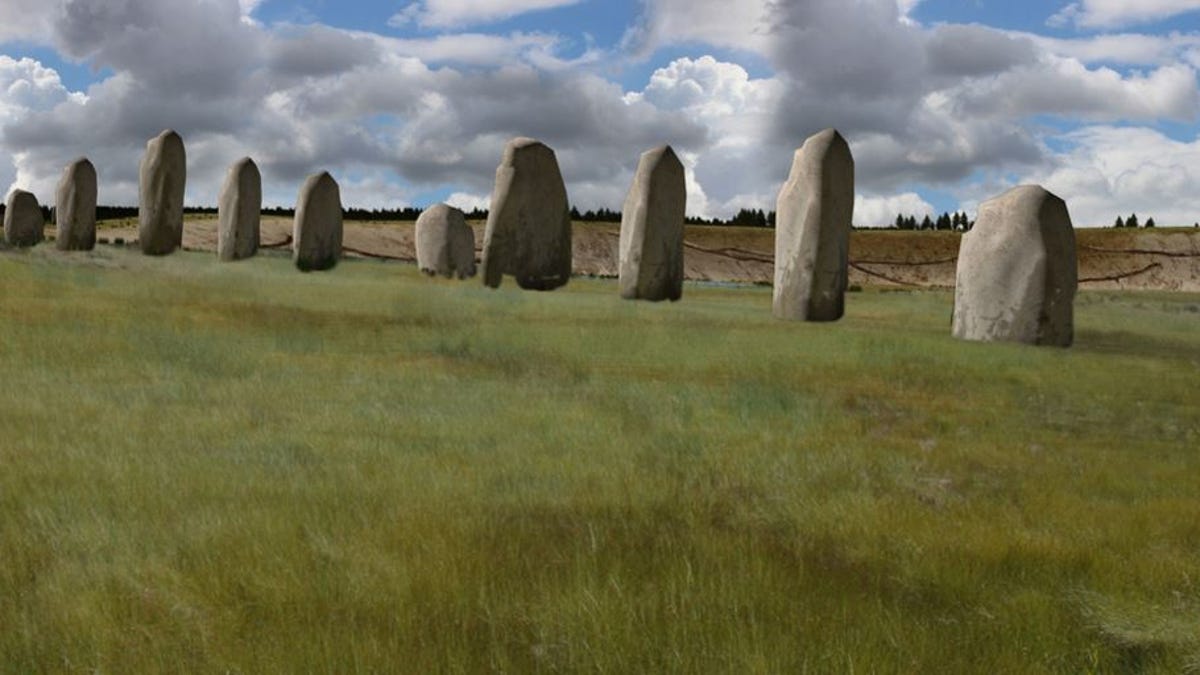Huge newly discovered monument dwarfs nearby Stonehenge
Move over, Stonehenge. The mysterious ancient monument looks to have an even larger neighbor hidden beneath a nearby bank as revealed by cutting-edge technology.
Stonehenge is one of the most iconic examples of a prehistoric monument we have, but it turns out it may be dwarfed in size by something buried underground less than 2 miles away. Researchers have been going over the area using ground-penetrating radar and other non-invasive technologies for the past few years and their data seems to show a major new stone monument.
"Our high-resolution ground-penetrating radar data has revealed an amazing row of up to 90 standing stones a number of which have survived after being pushed over and a massive bank placed over the stones," Professor Wolfgang Neubauer, director of the Ludwig Boltzmann Institute for Archaeological Prospection (LBI ArchPro), said in a release.
The row of huge (some believed to have originally measured over 12 feet in length) buried stones run along the flank of Durrington Walls, a lesser-known but larger prehistoric site a short walk from Stonehenge. Many of the stones seemed to have been pushed over and then buried beneath a huge bank to form what one of the project leaders describes as a sort of "fence or boundary" to an area that was likely one of the more important spots in Stone Age northwestern Europe.
"This latest work has given us intriguing evidence for previously unknown features buried beneath the banks of the massive henge monument at Durrington Walls," said Phil McMahon of the preservation organization Historic England. "The possibility that these features are stones raises fascinating questions about the history and development of this monument, and its relationship to the hugely important Neolithic settlement contained within it."
Stonehenge and Durrington Walls are believed to have been the site of neolithic burial and ritual grounds near the river Avon, dating back between 4,000 and 5,000 years. As Crave's Michelle Starr reported last year, LBI ArchPro's Hidden Landscapes Project has recently revealed a number of other historic monument sites in this ancient neighborhood, but this is the biggest find yet for the project.
"I don't think we could have anticipated finding not just a new monument underlying a very well known one, but to have these ruins of stone, it's a completely new bit of information... the like of which archaeology has never seen in Britain before," lead researcher Vince Gaffney of LBI ArchPro told the BBC.


